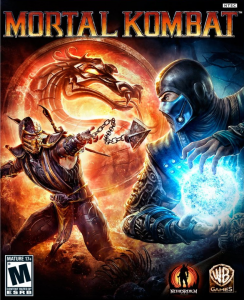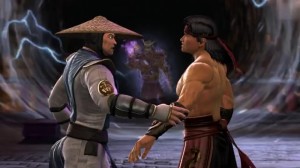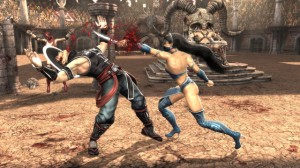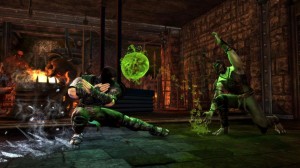Mortal Kombat has always been a lovable bastard child of the fighting game scene, and I mean that in the most sincere way possible. The storied history of the franchise that basically invented the ESRB really doesn’t need repeating; almost everyone who plays games has a story of the first time they saw or played a Mortal Kombat game. Nearly twenty years since the first game arrived in arcades, the newest and ninth game in the series, simply titled just “Mortal Kombat,” seeks to do what a lot of other games are attempting right now: reboot the franchise in an attempt to gain new fans and rope in the old ones. Thankfully, it actually pulls that task off while surprisingly moving the fighting game genre forward in terms of being more than just a competitive product. In short, this latest MK is just really damn exciting.
So how does one reboot a franchise that has eight titles to its name, not counting some infamously bad spin-offs? After playing this latest MK for so long, I can tell you that the answer is simple: make that game everyone liked in the ‘90s, but do it again. I’m only half joking, here; Street Fighter IV and Starcraft 2 both did basically the same thing to amazing success, so it’s only natural to follow in these Sasquatch-sized footprints. First off, the game is back to a full 2D plane. Sweeps are performed by pressing back and the “back kick” button, and uppercuts are done by, you guessed it, pressing down and “back punch.” Sound like those Mortal Kombat games you used to be really into? Good! And guess what? If you pick Scorpion and press back, back, and then punch, he’ll throw his spear.This sort of familiarity really helps MK shine in the long run. It is immensely satisfying to pick one of your favorite characters from the past games and see that most of the moves still work the way you expect them to. Combine all these projectiles, teleports, sweeps and uppercuts with some basic Tekken-like combos and a super meter similar to the “ultra meter” seen in Street Fighter IV and you basically have your fighting system. There are obviously more intricate, timing based juggle combos that the franchise has popularized, but the core fighting engine is simple enough for most non-fighting game fans to pick up and play, given they memorize some special moves and basic combos. It’s not the most complex thing in the world, but that works in MK’s favor: there are people out there that just want to hit buttons and then rip out a guy’s spine, and this game will totally allow them to do that.
So it’s a fighting game with a good fighting system. That’s great and all, but also kind of something you need in today’s fighting game scene. Aside from the gore and crazy projectile wars, the thing that will really help differentiate is the amount of work put into the single player portion of the game. As much as I love the most recent big fighting game release, Marvel vs. Capcom 3, even I can’t deny there’s not much to do outside of playing the arcade more a few times, practicing my skills, and then taking them online or finding some other people to play it with. Mortal Kombat hearkens back to the days of wondering what kind of crazy shit Namco would add to the console port of their latest arcade game. Along with the typical arcade ladder, online modes and training, there’s actually a good 4-6 hour story mode in here, and while story has never really been the selling point of fighting games to most fans of the genre, there’s enough good MK lore to sustain a full-fledged story. To actually get the player to experience a retelling of the only stories one would probably care about (the first three games), MK’s story revolves around Raiden sending himself a message from the future in a form that, while silly, is still not on the level of Superboy punching a hole in a universe. There are sixteen chapters in all, each revolving around playing a different character with impressive cut scenes bookending each fight. It’s not high literature, but it’s good enough and contains fan-service that will make some people downright giddy. Even with this good chunk of game, the team at NetherRealm studios animated endings for every character in arcade mode and threw in the Challenge Tower, a mode consisting of 300 challenges such as fighting with no arms or landing your bomb in a moving bucket with Cyrax. Completing these get you “koins” which you can then spend in the “krypt” to buy things with probably also start with a “k” but should not (and of course fatality inputs and alternate cos-I mean kostumes).
It’s hard to say if Mortal Kombat will take off the in tournament scene like MvC3 and SFIV have. It will be at the granddaddy of fighting game tournaments, Evo, at the end of July, so we’ll have to see how it fares. Either way, it’s always great to have competition in the fighting genre, especially when some games make examples of how to do certain things. In the case of Mortal Kombat, it has shown that one can make a fun fighting game that can hold its own as a single-player experience, which is something that hasn’t even been fathomed since the original Soul Calibur came to the Dreamcast. If you’re a fan of Mortal Kombat, you’ve probably already bought this, but if you have even a passing interest in fighting games and don’t feel like getting involved in the hyper competitive fighting game scene, Mortal Kombat is still a worthy purchase.




